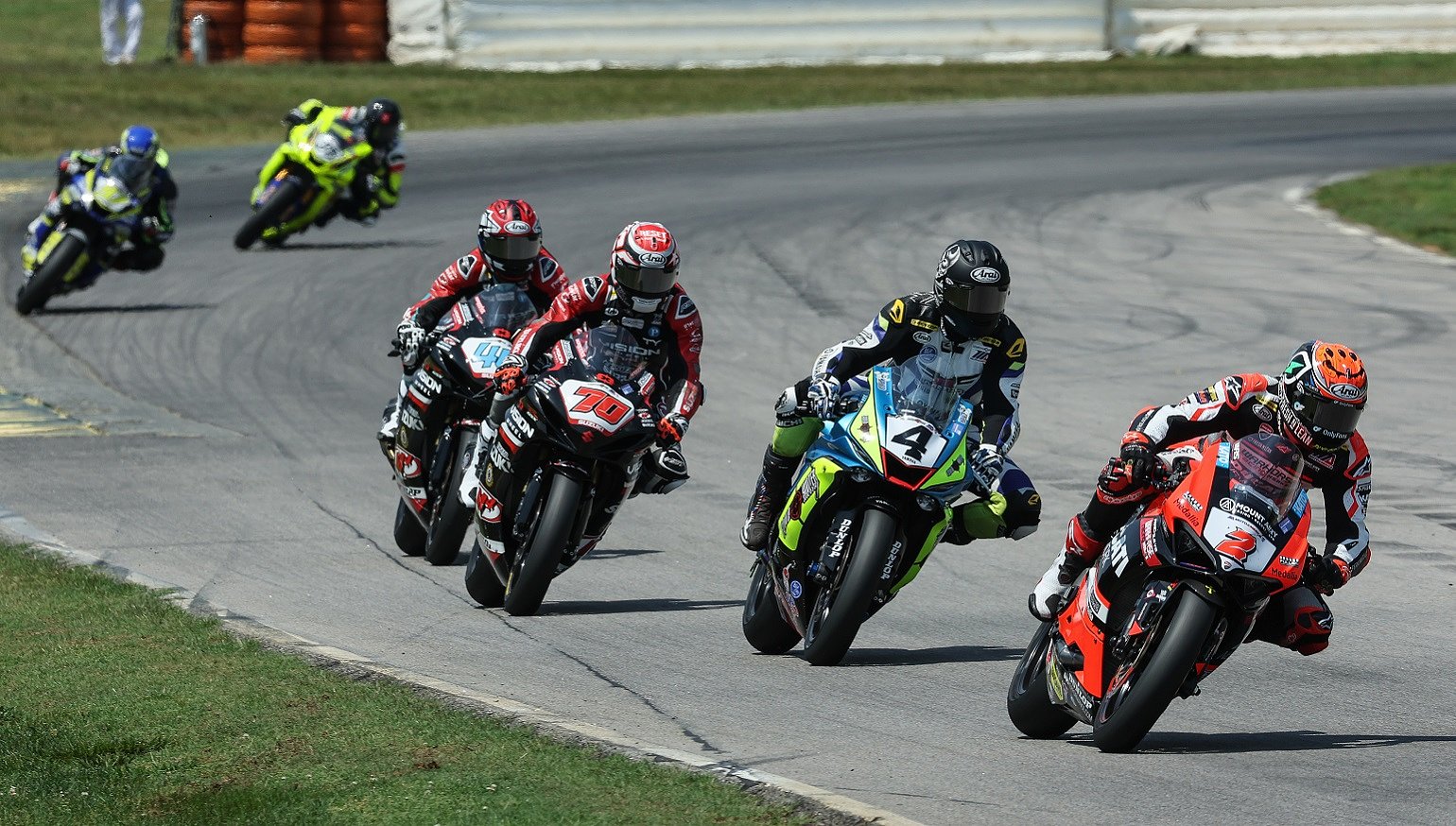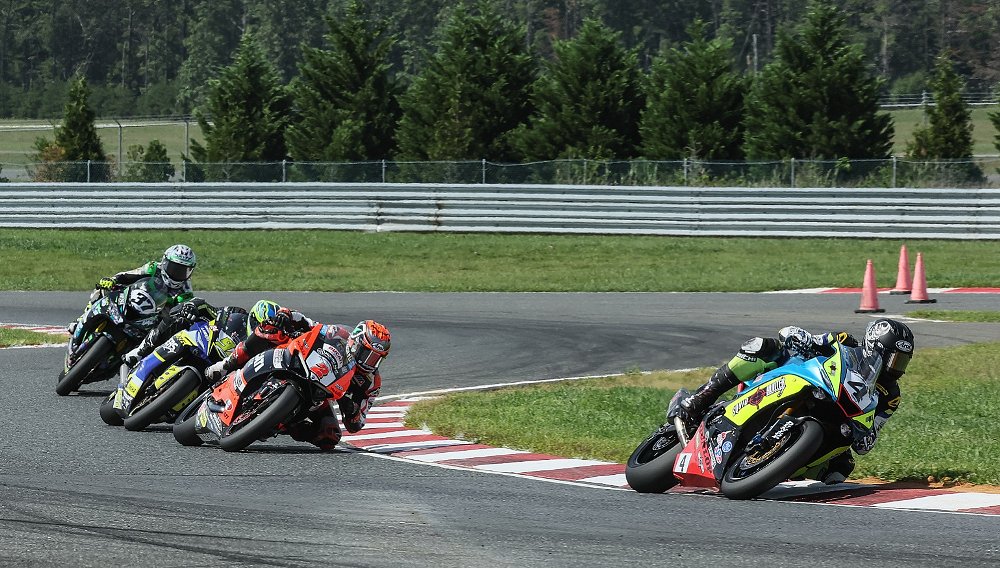The Daytona 200 in March and the MotoAmerica Supersport season that followed became the first test of the Supersport Next Generation rules that brought motorcycles like the Ducati Panigale V2, Triumph Street Triple, and the Suzuki GSX-R750 to a grid that had long been the exclusive domain of Japanese sport bikes with 600 cc, inline-four engines. Now, with the title settled, we've seen what might be considered a minor miracle in racing circles: All the top contenders actually think the rulesmakers did a good job.
That is not normal.
In the hypercompetitive world of motorcycle racing, the winning teams usually think the rules should be tweaked a little to give them a better advantage and the losing teams think big changes are needed in the interest of fairness. Yet as the top Supersport teams were packing up their trucks at New Jersey Motorsports Park on Sunday after the penultimate round of the series, no one really criticized the work by the FIM, the world motorcycle body, and MotoAmerica, in creating a formula that would allow the different motorcycles to race against each other competitively and bring new life to a class that always offered good racing, but was becoming less and less relevant in today's consumer motorcycle market.
"Honestly, in my opinion, everything they did was spot on," said former Superbike champion Josh Hayes, who has won three MotoAmerica Supersport races this season as a part-time racer and also watched the class closely as a coach to Rocco Landers, second in the Supersport standings. "I was impressed immediately with how close they've been able to make it, that all the different brands are competitive."
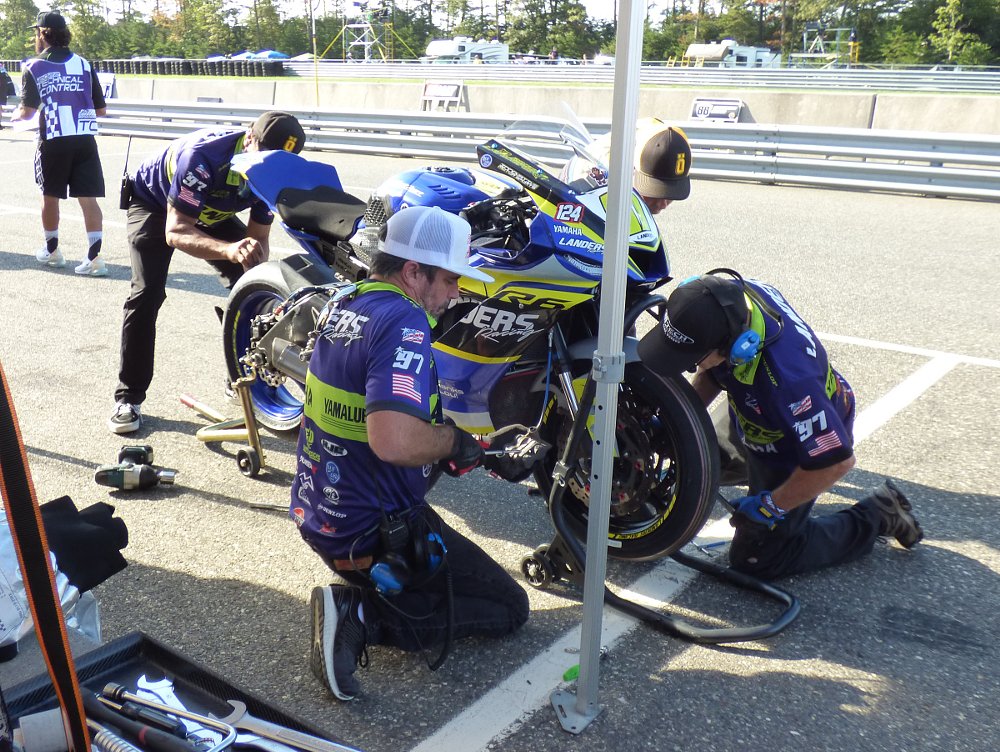
Why Supersport had to change
The Supersport class has provided great racing more often than not over the years, but the class has become less relevant to what's being sold in motorcycle dealer showrooms. The class has long been open to 600 cc four-cylinder bikes, 675 cc triples, and 750 cc twins. But in reality, the field gradually dwindled to the point where the majority of the racers were on Yamaha YZF-R6s, with a few Suzuki GSX-R600s and the occasional Kawasaki ZX-6R, allowed to compete despite its 636 cc displacement. Over the years, the Japanese 600s became so highly focused on getting around a racetrack that they were no longer very practical as street bikes. Sales fell dramatically as consumers bought mid-size motorcycles with twin-cylinder engines that were less expensive, more comfortable, better suited to street riding, and cheaper to insure.
The Next Generation rules aimed to bring new manufacturers into the class and renew fan interest. Ducati, Triumph, and MV Agusta entries appeared on the grid in World Supersport. In this country, the Warhorse HSBK Racing Ducati NYC team launched a serious effort by hiring veteran rider Josh Herrin to ride a Panigale V2 and the Vision Wheel M4 ECSTAR Suzuki team went to even greater lengths, developing a kit to make the GSX-R750 eligible for the class.
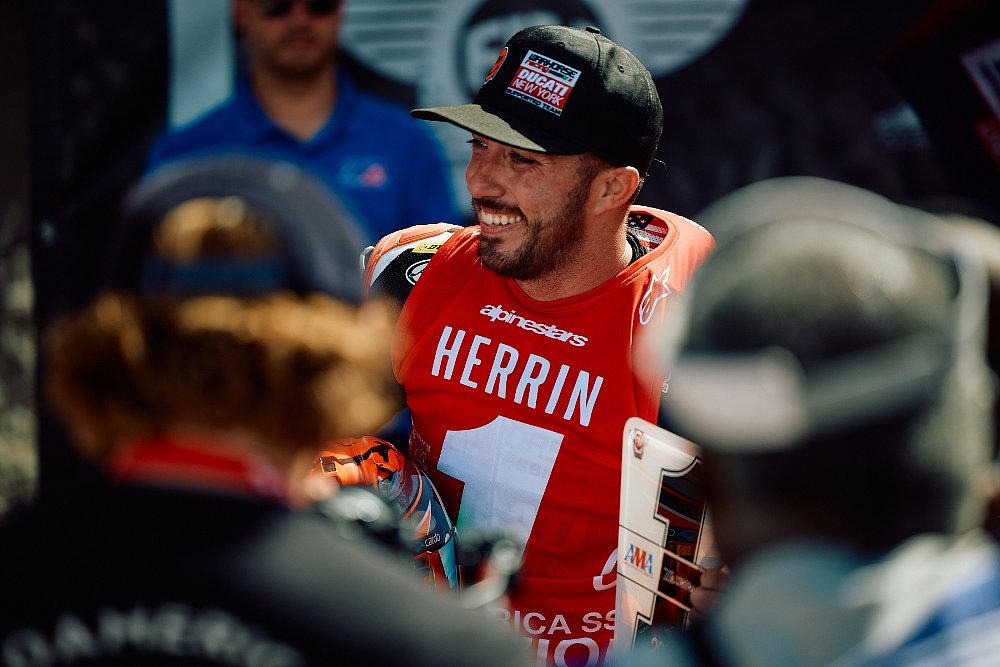
Anyone not paying attention might think the rulesmakers got it all wrong. Herrin won eight of the 16 races so far and wrapped up the championship Saturday, with three races yet to run. But in reality, the competition was much more balanced. Herrin, a former Superbike champ, was competing mostly against young, less experienced racers, many of them rookies in the class, like M4's Tyler Scott, literally half Herrin's age, Landers, and Scott's teammate, Sam Lochoff, who has been hampered by injuries.
In addition to Herrin's eight wins, Landers has three on a Yamaha R6, Hayes has three on his Squid Hunter team R6, Scott has one on the GSX-R750 and there was even a lone win by a Kawasaki 636, as local expert Jason Farrell won a race in tricky wet conditions at Road America.
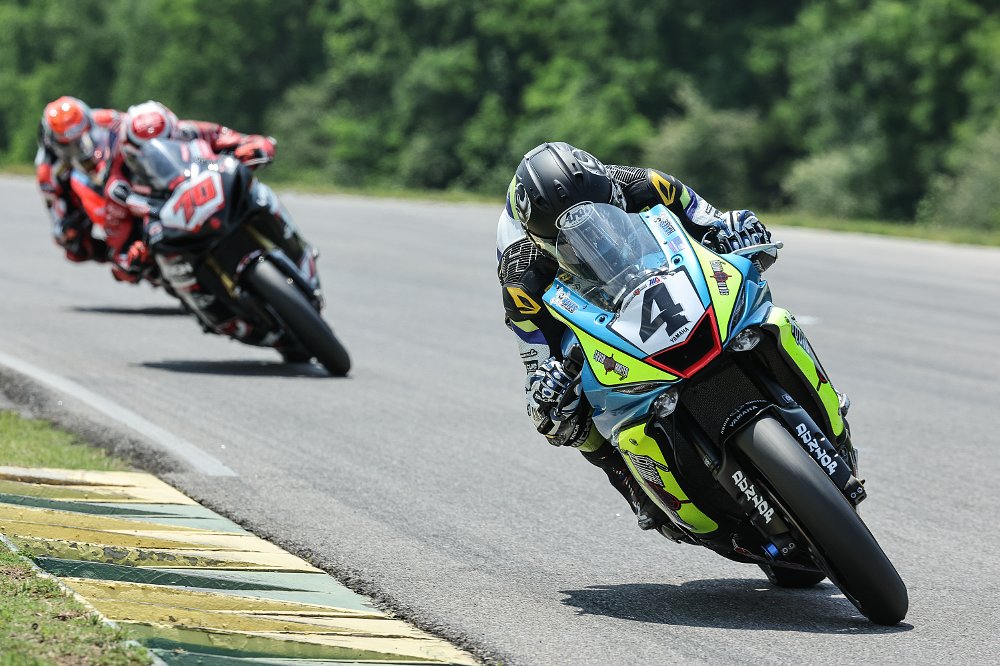
"If you'd asked us in February, I think everybody was pretty apprehensive, as we were the first series in the world to take a stab at the new rules," says MotoAmerica partner Chuck Aksland.
FIM officials used the YZF-R6 as a baseline and then applied limits to the other motorcycles with the goal of making them all competitive. By altering the engine control units, the officials could limit things like maximum engine speed or throttle openings. That's why the M4 team had to build a kit for the GSX-R750, so it would have a ride-by-wire throttle and various parameters could be controlled. The end result, said M4 team manager Chris Ulrich, was that the 750 made the same peak horsepower as the GSX-R600s they ran last year, but the racers liked the 750 better, because it pulled off the corners better with its greater torque.
"I think it worked pretty well," said Aksland. "There were a few adjustments at Daytona. There have been minimal adjustments since. And the end result is we've had every manufacturer win a race. I don't know how much better you could get, really."
"I think the FIM has done a pretty good job of balancing the bikes," said Ulrich. "Look, the guys doing this stuff are pretty smart guys."
While the rulesmakers started by comparing the various motorcycles on a dyno, they go well beyond that. They look at data gathered from the races. They can see how hard the riders are riding and can tell when adjustments should be made to keep the field level, Ulrich said.
"They can read the data," Ulrich said. "Like in Atlanta, Sam Lochoff was riding that bike very, very hard. They saw the forces he was putting into the suspension. They know he's not just out there effing around."
Advantages and disadvantages
All the top teams also agreed that some bikes have advantages at some tracks while others excel elsewhere. And there are advantages in terms of costs, as well as on-track performance. Perhaps counter to what you might think, the new bikes in the class can be cheaper to run than the old standby R6s.
"The R6 has to be built within an inch of its life, obviously within the rules, to be competitive," said Stoney Landers, father of Rocco and head of Landers Racing. The R6 is allowed more performance modifications and Landers Racing rebuilds the engines after every two rounds, or four races. By comparison, the GSX-R750, which is governed electronically, uses stock internal engine parts and the M4 team has one bike that has more than 2,000 race miles on it. It's possible to do the entire season on one engine because "It's not working all that hard," Ulrich said.
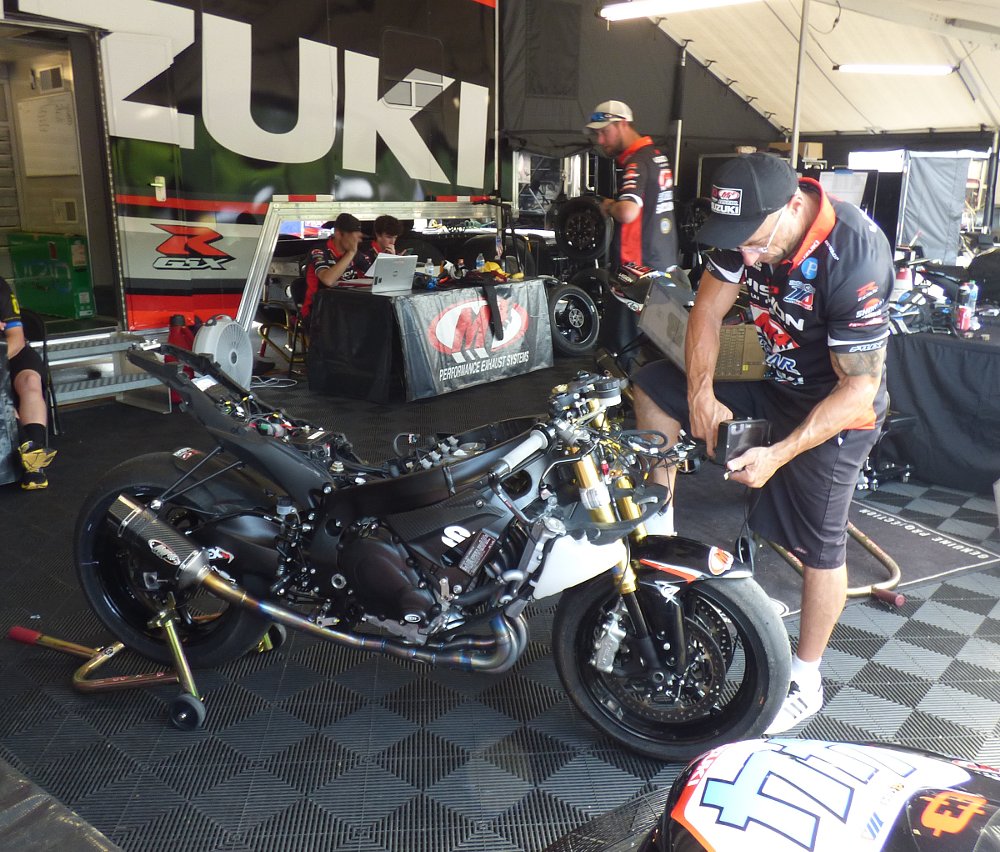
There are other less obvious advantages and disadvantages, too. Stoney Landers said that the biggest problem his team has had with the R6 is the need to accelerate while still at high lean angles, while riders on the Ducati and the Suzuki 750, which produce greater torque, can stand up the bike more before accelerating hard. The result is the R6 suffers worse tire wear.
The advantage in that is that his 17-year-old son, Rocco, is gaining incredible experience, especially when he's battling with experienced veterans such as Herrin and Hayes, both past Superbike champions.
"The fact that Rocco is having to thrash it, I mean thrash the bike, to keep up with those guys, I think in the end it will just make him that much better," said Stoney Landers.
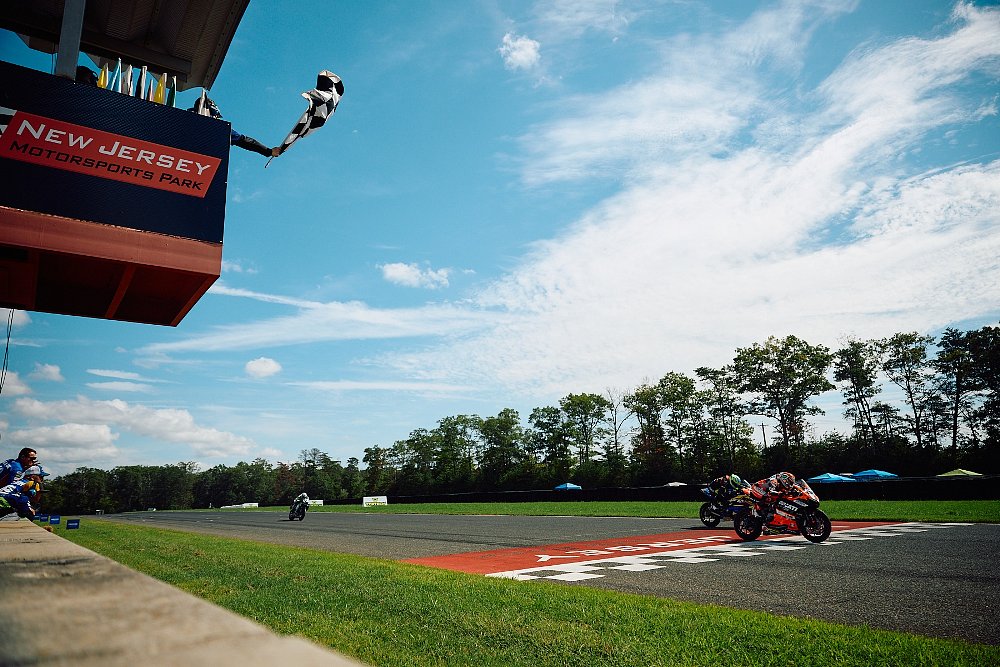
Keeping the fans interested
The other advantage of bringing new manufacturers into the Supersport class is to keep fans interested. Some fans follow certain riders, but others follow certain brands. Having a Ducati Panigale V2 competing in a class that used to be almost all Yamahas draws more attention.
"Every brand has their fans," said Aksland. "We're seeing Ducati fans come out and root for Josh Herrin."
"Having Ducati in the pits is huge," Herrin said after clinching the title. "The fan base is insane. It's not like anything I've ever experienced before. It doesn't matter if they love you or hate you, if you're on a Ducati, they're a fan of you. When you're with other manufacturers, it's not like that. They're not siding with the brand, they're siding with riders. So it's really cool to be a part of and I hear there's some really exciting news for possibly a limited-edition bike next year."
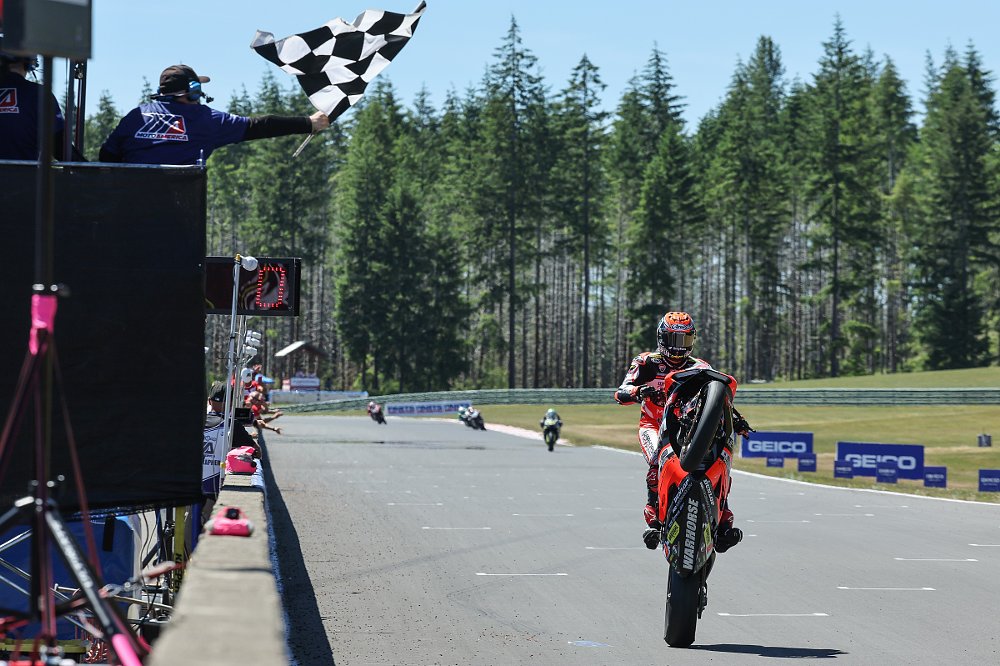
Ulrich points out that Herrin was facing an uncertain future until Ducati came in with the Supersport effort. He also noted that some smaller teams have adopted the GSX-R750 and their riders are producing some of their best results ever. In both cases, having new bikes on the grid created opportunities for riders. Even those who don't benefit directly have acknowledged that the additional attention on the class is positive.
"I do understand that part of it, for sure," said Stoney Landers. "The more manufacturers that participate in the class, the better it is for everyone in the end."
Aksland of MotoAmerica noted that along with Ducati winning the Supersport title, the other championships decided this past weekend were the Royal Enfield Build. Train. Race. program and the Mission Foods King of the Baggers series won by Tyler O'Hara on an Indian — two brands not associated with roadracing.
"Along with the Harleys and Indians and Royal Enfields, I think we've got a real motorcycle gathering going on," Aksland said.

 Membership
Membership

